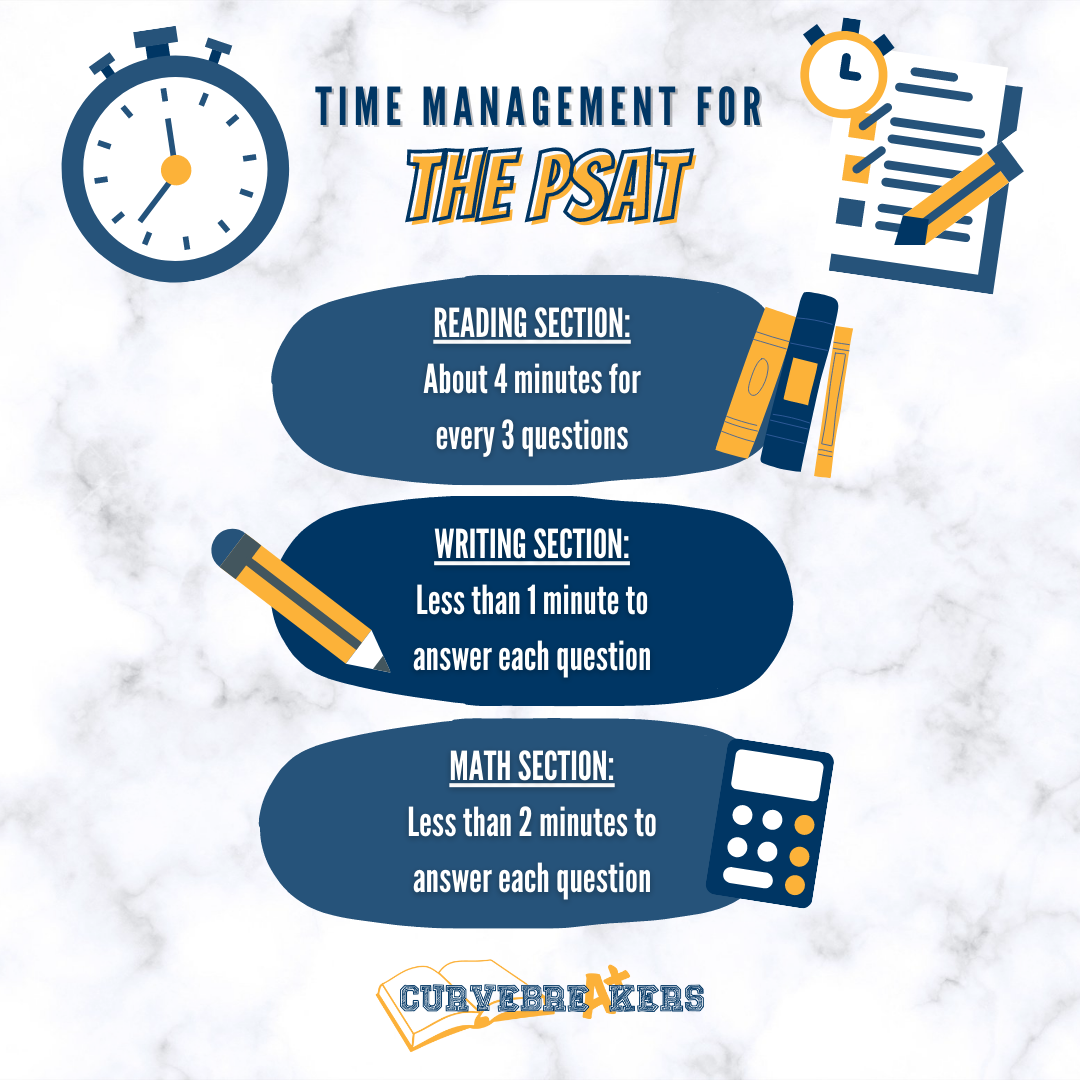The PSAT takes months to prepare and study for, so by the time students get ready to take the test, they should try not to waste a single second as each one counts. Time management for the PSAT is challenging, especially since the writing section notoriously has more questions than the minutes allotted. We have put together a guide of strategies to help students finish the PSAT on time and hopefully without rushing.
Time Management for the Reading Section of the PSAT
- For the reading test, students get about 4 minutes for every three questions they have to answer. The ratio of questions to minutes for the reading test falls between the writing and the math sections. Ideally, students will have time to review their work after completing the reading portion of the exam.
- It is possible to approach questions out of order as long as you are within the appropriate section. It is better to follow the given order to avoid unnecessary confusion. However, if a student finds that a passage is particularly tough to get through, they should move on to another one before returning.
- Some teachers recommend that students look at the questions before reading the passage. While this isn’t inherently bad advice, time is a luxury on the PSAT. One could instead skim the questions before reading the passage. Alternatively, a student can mentally highlight sentences that they believe may contain answers to the questions.
Time Management for the Writing Section of the PSAT
- The writing section of the PSAT 10 only gives students 35 minutes to complete 44 questions. This means that there is less than 1 minute to evaluate, eliminate, answer, and check each of the questions in this section.
- However, the focal part of the writing and language section of the PSATs has students correct the grammar of labeled sentences in the passage. Therefore, students can study some of the basic grammar rules to know how to answer the questions pretty efficiently when the time comes for the writing and language section.
Time Management for the Math Section of the PSAT
- The math section of the PSAT 10 includes 48 questions that students must complete within 70 minutes, which sounds like a substantial amount of time. However, half of the math section requires students to solve problems without a calculator, and these questions are often multi-layered and require multiple steps.
- Many of the math problems on the calculator section make it a little trickier even with the help of technology. Many questions on this section are word problems that often have unnecessary information unrelated to the problem at hand. A helpful strategy to make sense of the word problems is to cross off any unnecessary information, numbers, or filler to make it as close to a solvable equation as possible.
- The non-calculator section may seem very intimidating, but students can use the fact that the problems must be possible to solve without a calculator to their advantage. Students should focus on remembering equations not provided for them and the methodology of solving them. Don’t waste time worrying because there is no calculator.
- Students should use scratch paper to their advantage. This advice is especially helpful on the write-in portion of the exam, where any three-digit number or fraction can be an answer.
How Not to Waste Time
- Since there is no penalty for wrong answers on the PSAT, the best strategy for handling uncertainty is for students to give it their best guess. Questions students are unsure of should be marked and left for the end of the section, when they can further evaluate them if there is time left.
- When trying to guess to get the correct answer, students should use an elimination method where answers that the student is sure are wrong should be crossed out to have a better chance of guessing the correct answer.
- Before taking the test, students can pick either A, B, C, or D to be their default answer to a question they have no idea how to answer. Use this as a last resort, but keep it in mind since it can come in handy when trying not to deliberate too long on any single question.
Preparation Before the Test
- Students should be studying all three sections for at least a few months before taking the test. Practice tests, tutoring, and taking the PSAT 8/9 can help make students ready and capable of properly managing their time.
- Students should also take a practice test while timing themselves. The goal is to complete each section with confidence that they got the correct answers. It’s even better if the student is left with time to spare to check them.
Conclusion
Finishing the test on time can often contribute to students earning a favorable score. It does require some practice, but knowing how to use strategies on the test can work to one’s advantage. If you’d like a more in-depth breakdown of the PSAT, we have a blog on that too.
Want to learn the best strategies for the PSAT?
Check out our self-study “YouTube-style” PSAT Strategy Accelerator Course.


